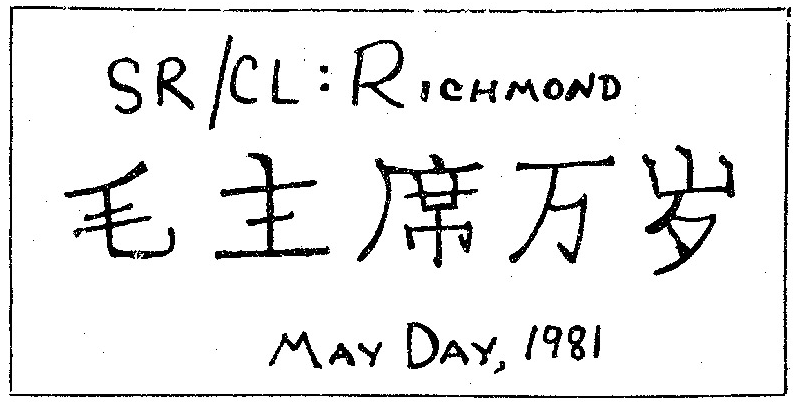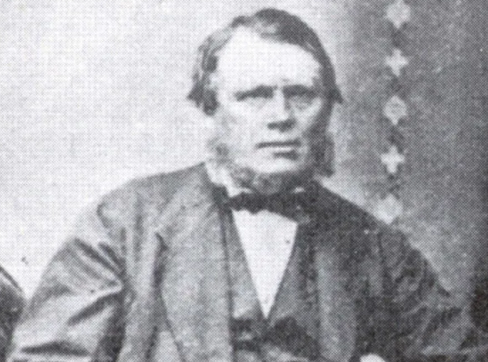The May Day Mystery
The mystery May Day ad from 1987
Strange, undecipherable ads appeared in the Daily Wildcat Newspaper every year on the first of may. Several theories exist concerning the origin of the ads but their purpose is yet to be understood.
The May Day Mystery revolves around cryptic full-page advertisements that have been published in the University of Arizona's student newspaper, the Daily Wildcat, every May 1st since at least 1981. These ads feature complex combinations of maps, math equations, images, and text, often accompanied by a drawing of a smirking man. The identity of the advertiser, known as "The Orphanage," remains unknown.
You can view a collection of all of the discovered ads here.
Bryan Hance, a student who encountered the ads in the mid-1990s, sparked interest in solving the mystery. Over the years, enthusiasts, including Kate Vesely, have attempted to decipher the messages, but the true purpose and origin of the ads remain elusive. The mystery has gained attention on various online platforms, with people speculating on its meaning and purpose. Robert Hungerford, identified as "The Orphanage's" occasional lawyer, has added a playful element to the online discussions, hinting at a profound transformation associated with the mystery. Despite decades of investigation, the May Day Mystery continues to captivate and puzzle individuals around the world.
Bryan Hance and the May Day Mystery
The 1995 May Day Mystery Ad that sparked Bryan Hance’s investigations.
On May 1, 1995, the front page of the Daily Wildcat, a college newspaper, had typical stories about protests, campus issues, and alcohol violations. A freshman named Bryan Hance found a strange full-page ad on page 16, filled with maps, math, and confusing phrases. It mentioned a group called "The Orphanage" and had a smirking man illustration. Over the next years, similar ads appeared annually on May 1, sparking Hance's curiosity.
By 1997, Hance, now a junior and the paper's webmaster, started investigating the mysterious ads. He delved into the archives, finding ads dating back to 1981. The "May Day Mystery" intrigued many, and as the internet grew, people worldwide tried solving it through podcasts, videos, and social media. Some spent decades on the quest, and it even made its way into media as a notable mystery. As the mystery enters its 25th year, the question remains: will anyone solve it?
Kate Vesely, another Wildcat reader, grew up in Tucson and also noticed the May Day ads. While friends dismissed them, she believed they held a coded message. She explored maydaymystery.org and kept returning to campus each May 1 to get the paper. Her fascination with history led her to dig deeper into the mysterious ads even after graduating in 2002.
An early May Day Mystery ad from 1981
Vesely spent hours on the site, scrolling through the ads and seeing the similarities over the years, the same imagery and repeated words and, more often than not, that drawing of a smiling man, sometimes with four stick-straight lines for hair, sometimes five. When she wasn’t working on grad school assignments, she was studying the texts, searching the internet for leads or slouched in front of a microfiche machine at the library.
In 2009, nearly 15 years after Hance saw his first May Day ad in the Wildcat, Vesely emailed him to see what he thought about starting a Facebook group. There, she figured, people could puzzle over the clues together. With Hance’s blessing, she created Mayday Mystery Fans and started sharing theories and asking questions to a growing community of people just as gripped by the ads as she was. Several years later, she began visiting Reddit, where there are ongoing conversations about unsolved mysteries. She hoped to draw on fresh perspectives.
But while she gained new insights into different elements of the ads, she felt no closer to solving what she’d now spent more than a decade thinking about. Still, over the years she had started to develop a hypothesis. In the 1970s, she thinks, a “collective of brilliant geniuses” attending the University of Arizona formed some sort of intellectual fraternity, using the newspaper to communicate with each other about subjects that were important to them.
The ads maybe started as a game and turned into a tradition. She could imagine young, cerebral students hungry to explore and exchange ideas about science, math and philosophy. But who were these bright shiny minds she pictured meeting at Cochise dorm, a residence hall with impressive Roman columns that once only housed men?
Maybe they gathered around the big stone fireplace that anchors the building’s lobby, or whispered furtively in the shared bathrooms on the third floor. This origin story is purely speculative, Vesely knows, but not far-fetched. Because she knew of one person who fit into her hypothesis almost perfectly.
During his senior year, Bryan Hance, frustrated by his inability to solve the May Day Mystery, turned to the internet for help. On his website, he posted a message seeking assistance, hoping to unravel the puzzle. To his surprise, he received an email signed by "The Orphanage," the same name from the ad that intrigued him as a freshman.
The email stated, "The day you can see the door, you will be welcomed inside." This mysterious message only deepened Hance's involvement. Instead of leaving Tucson after graduation, he worked for the university and started a side business. Every May, when the ads were published, he continued researching and posting clues on his website. He received correspondence from "The Orphanage," along with rare coins, news clippings, and letters from various places.
People claiming to be from "The Orphanage" sometimes called him, informing him about upcoming ads. Other times, he communicated with individuals like himself, attempting to solve the mystery. In the early 2000s, he met a person who insisted on an in-person meeting to share her research. Hance biked to a cafe in downtown Tucson, only to find that the researcher was a young girl accompanied by her father from Phoenix.
The girl presented her theory that the person behind the May Day Mystery was the Zodiac Killer, a notorious serial murderer from the late 1960s in Northern California. She compared images of envelopes from the Zodiac Killer to those Hance had received from "The Orphanage." Despite the girl's conviction, Hance honestly expressed his skepticism. The girl left, mentioning that she had sent her findings to the FBI.
Was Robert Hungerford behind the May Day Mystery?
Robert Hungerford is confirmed to be the lawyer of "The Orphanage" but who is he working for?
He had been a University of Arizona student in the late 1960s, studying philosophy, and later earned his law degree there. The ads have contained more than a dozen different languages; he reportedly spoke eight, including Latin, Hebrew, Russian and Greek.
Vesely discovered that a man named Robert Hungerford, who was now in his 60s, had an office in downtown Tucson. This was not far from where Vesely worked for the Pima County criminal justice system. One hot day in the summer of 2013, she mustered the courage to drive to his office before a meeting. She found his office address online, parked her car, and nervously went down to the basement of the building. There, she found Suite 16 and noticed a business card on the door indicating that he was retired. When she knocked, nobody answered. Before going back outside, she left a note.
The note said, "I'm a longtime follower of MDM," referring to the May Day Mystery. "I was in the neighborhood and wanted to say hello. If you ever keep office hours and wouldn’t mind a visit, please let me know." She included her email address and left. Surprisingly, the next day, there was a message waiting for her in her email inbox.
On the internet, Hungerford adopts a more playful tone. This is evident in his communication with Vesely after their initial email exchange and in the Facebook group. In the group, his avatar is the default white silhouette of a man, subtly encouraging fans of the mystery without revealing much. Hungerford explained in a Facebook message that his motivation is for a "total social/theological transformation," beginning on August 30, 1969. Regarding what will happen, he mentioned "a dramatic transformation, beyond any sea change." Hungerford conveyed that one would need to experience it firsthand to understand and report on the Gestalt
Hungerford's role as the occasional lawyer and errand-runner for "The Orphanage" is not a secret. Brett Fera, who worked at the Wildcat as a student and later became the director of Arizona Student Media at the university, remembers conversing with Hungerford. Each year, Hungerford would politely call to inquire about advertising in the May 1 issue. He was courteous and professional, using just enough words without being impolite – perhaps reflecting a different era.
Hance, who was on staff at the Wildcat, discovered Hungerford's identity. Curious, he wanted to learn more and even met Hungerford in person when the latter hired him to fix his computer. Hance attempted to engage Hungerford in conversation about the May Day Mystery, but Hungerford remained reserved and businesslike. Despite Hance's efforts, Hungerford didn't share much about the mystery.
Who do you think is behind the May Day Mystery? Share your thoughts in the comments.
If you enjoyed learning about the May Day Mystery you might also be interested in the Amherst Mystery or the Watseka Wonder.

































